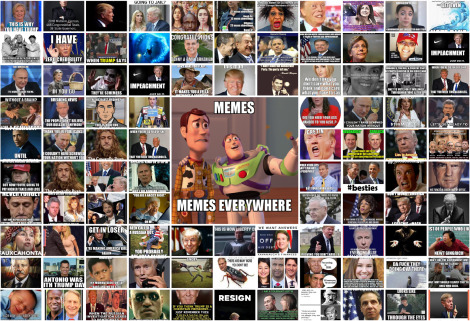
Alright, meme lovers, buckle up for a wild ride through the history of memes! From cavemen scratching the first memes on walls (probably) to modern-day viral sensations like Grumpy Cat and Distracted Boyfriend, memes have been shaping culture long before the internet took over. But where did memes actually come from? Let’s dive deep into the evolution of memes—how they’ve changed over centuries, taken over the internet, and maybe even influenced elections.
Memes aren’t just funny content; they’re a cultural force that shapes trends, breaks the internet, and even impacts politics. Let’s explore how memes became the digital DNA of our culture and how they continue to evolve into viral hits.
From Ideas to Internet
Long before the internet memes we know and love today, the term “meme” was introduced by evolutionary biologist Richard Dawkins in 1976. In his book The Selfish Gene, Dawkins described a meme as a unit of cultural transmission—essentially an idea, behavior, or style that spreads from person to person. Just like genes carry biological information, memes carry cultural information. So, in a way, memes have been evolving for centuries, even if early “memes” didn’t involve relatable cats or sarcastic frogs.
Dancing Baby and Iconic 90s Memes
Fast forward to the 1990s, and the internet gave birth to the earliest recognizable memes. Who could forget the Dancing Baby, one of the first viral sensations, making its way into pop culture through chain emails and even an appearance on Ally McBeal? As dial-up connections sped up (slowly), so did the spread of these quirky, shareable pieces of content.
Memes from this era, like Bad Luck Brian and Trollface, paved the way for today’s viral culture. They were often simple, image-based jokes with a punchline but they laid the groundwork for what was to come.
The Meme Renaissance
With the rise of platforms like Facebook, X (Twitter), and Instagram, memes exploded in popularity. Memes were no longer just a fringe internet hobby; they became mainstream. Thanks to these platforms, memes could be shared globally within seconds, leading to the rise of viral content. Think Grumpy Cat, Bernie in mittens, and the famous Distracted Boyfriend meme—instantly recognizable, easily shareable, and capable of sparking thousands of remixes.
But it’s not all just for laughs. Memes began to take on more serious roles in shaping culture and even politics. Remember the 2016 U.S. presidential election? Memes became a tool for political campaigns and commentary, with some arguing that certain memes had an influence on voter behavior. Memes became a powerful form of communication, able to condense complex ideas into easily digestible, shareable content.
Shaping Trends and Influencing Culture
Memes are the digital DNA of modern culture. From political commentary to internet subcultures, memes have become a universal language that transcends borders and age groups. They’ve influenced music, fashion, and even how we consume media. Just look at how meme formats like “Mocking SpongeBob” or “Expanding Brain” have been used to comment on everything from pop culture to philosophical debates.
And let’s not forget meme culture’s ability to adapt and evolve. New formats emerge daily, while older ones resurface with new twists. The speed at which memes spread and adapt is mind-boggling what’s viral today might be forgotten tomorrow, replaced by the next big thing.
The Future of Memes
As technology continues to evolve, so will memes. With AI-generated content, virtual reality, and the constant churn of social media platforms, it’s hard to predict where meme culture will head next. But one thing is certain, memes are here to stay. Whether they’re shaping political discourse or simply making us laugh, they’ll continue to be a powerful force in our digital world.
So, what’s next? Who knows—you might be the creator of the next viral meme sensation! Good luck, and keep the memes coming!


